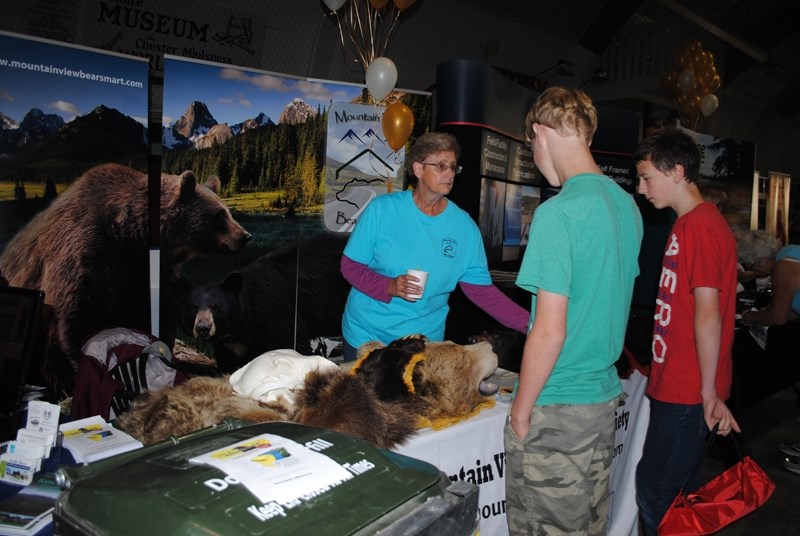Mountain View County residents are advised to be on the lookout for bears in the district scavenging for food to fatten up in preparation for hibernation next month.
“Bears are on that last push to find food and make sure they're well fattened to go into their dens,” said Jane Bicknell, secretary for the Mountain View BearSmart Society.
“The biggest thing this time of year is to handle your garbage properly. Make sure it's in bear-proof containers, or if you don't have one, lock it in the shed until you can get it to the dump.”
There is generally an increase in bear activity during this time of year, but an increase hasn't been seen yet in the county.
However, more sightings are expected later this month and into October, she said.
Overall, bear sightings have decreased across the county in comparison to last year.
“Certainly there is an increase around this time of year, because bears are interested in that final push to put on weight and really looking for food of all sorts,” she said, adding that berries are important for bears this time of year.
Bears start going into hibernation in mid to late October, depending on the weather.
“If there is still access to food then they tend to stay out of the dens a little longer and maybe don't go in until November,” she said, adding that bears go into their dens in a sequence.
“Females with cubs will be the first ones to go into the den; it's better protection for the cubs,” she explained. “The next ones to go in will be females without cubs and younger bears, and your larger adult males are always the last ones to go into the dens.”
Generally, even if it's cold and snowy, larger bears are still out and about in November.
All bears are in their dens by late November or early December, she said.
They start to come out of hibernation in late March or early April and the sequence works the opposite way. Females with cubs, and especially new cubs, come out of their dens in late April, so the cubs have the best chance of survival, she said.
There are ways that residents can avoid the increased possibility of bear encounters during this time of year.
“The most important thing for people at home, if they live on an acreage or a farm or even if they live in town, is to make sure not to have bird feeders up,” she said.
“If you have fruit-bearing trees or shrubs, pick all your apples, pick all your berries. Don't have anything in your yard that a bear could eat that would attract them in there.”
As hunting season is approaching, hunters need to be extra cautious of bear encounters, because they are trying to be quiet in the bush to catch their prey.
“People need to be extra cautious if they're out hiking and hunting, not to have a surprise encounter with a bear,” she said. “If you're a hunter, you don't want to surprise a bear, yet you're doing some of the things that puts you in danger of doing exactly that.”
On Sept. 10, a grizzly bear was captured by fish and wildlife officers northwest of Water Valley, according to the society's website.
The bear was getting into garbage bins and needed to be relocated.
During the evening hours of Sept. 5, a dog was attacked in the Eagle Valley area. Officers believe that a cougar was responsible for the attack.
There have been various other bear and cougar sightings within the county in the last few weeks.
Meanwhile, the society has a new publication, which was displayed at the society's booth during SPOG's 16th annual Neighbour's Day in Sundre on Friday.
The publication is an all-in-one information pamphlet, which offers pointers about being bearsmart.
Before this, there were individual pamphlets targeting different audiences, such as residents, hunters or farmers.



